How to Build an Effective Marketing Schedule (Template)
 You may believe that spending time organizing takes time away from getting work done. The thinking goes that if one focuses on the work itself, everything else can be set aside, and things will somehow work out.
It’s time to squash this myth. According to a CoSchedule survey, marketers who are organized are 397% more likely to report being successful. So how can your marketing team actually begin getting organized? Start by investing your time in creating a clear marketing schedule. From there, your schedule can act as your home base. You can refer to your schedule and accurately plan everything you need around it.
You may believe that spending time organizing takes time away from getting work done. The thinking goes that if one focuses on the work itself, everything else can be set aside, and things will somehow work out.
It’s time to squash this myth. According to a CoSchedule survey, marketers who are organized are 397% more likely to report being successful. So how can your marketing team actually begin getting organized? Start by investing your time in creating a clear marketing schedule. From there, your schedule can act as your home base. You can refer to your schedule and accurately plan everything you need around it.
What Do We Mean By "Marketing Schedule"?
In simplest terms, a marketing schedule can be anything that's used to track the following:- Projects and campaigns your team will work on.
- Which team members will be responsible for each one.
- The deadlines and ship dates for deliverables.
- Stress less. Working without a clear strategy sucks. It leaves team members frantically scrambling to produce directionless content at the last minute. Ultimately, this leaves everyone feeling exasperated and undermines success.
- Work more efficiently. When you don’t have to think about what you’re going to do in a day, you’re mentally free to focus on what matters. That leads to getting more done in less time.
- Increasing transparency across your team. Not knowing what the rest of your team is working on can lead to misunderstandings and frustration. Laying out all your projects in one shared space makes it easier for everyone to see what everyone else is doing (and plan projects accordingly).
Step 1: Determine Projects to Place on Your Schedule
So, you've decided you’re ready to build out a complete marketing schedule for your content. The first thing you’ll need to do is figure out which projects need to go on your schedule. Start by listing out all your recurring project types.- Blog posts
- Design projects
- Videos
- Podcasts
- Email newsletters
Fill Your Schedule With an Effective Brainstorming Process
We’re big believers in group brainstorming here at CoSchedule. If you don’t have any specific ideas for content lined up yet, this quick process may help you change that. Here’s how our 30-minute three-step brainstorming process works:- Have everyone on your team spend 10 minutes writing down ideas. Don’t worry if they’re good or not. Just get them down on paper.
- Then, spend 10 minutes reading those ideas aloud, and have everyone score them silently. Use a three-point scale, where three’s are the best ideas you absolutely need to create, two’s are average ideas that need work, and one’s are duds to be tossed out. Expect to see a mix of ideas that fall into all three buckets.
- Last, spend ten minutes discussing every idea that everyone agreed was a three. From these, choose the ideas you’ll actually execute on. Depending on how much content you typically produce, you can expect to generate a month’s worth of ideas this way (that’s typically the result we get, but your results may vary).
Assign Projects to Team Members
Next, determine who will be creating each piece of content on your schedule. This means including everyone involved in seeing each project through from ideation to completion. Possible team members could include:- Writers
- Designers
- Programmers
- Project Managers
- And anyone else involved

Establish a Color-Coding Scheme
Color-coding your schedule makes it easier to tell projects apart at a glance. Assign one color to each type of project. For example, all your blog posts might be green, while videos could be orange, and so on. Alternatively, you might also want to color-code projects based on the teams or individuals they’re assigned to.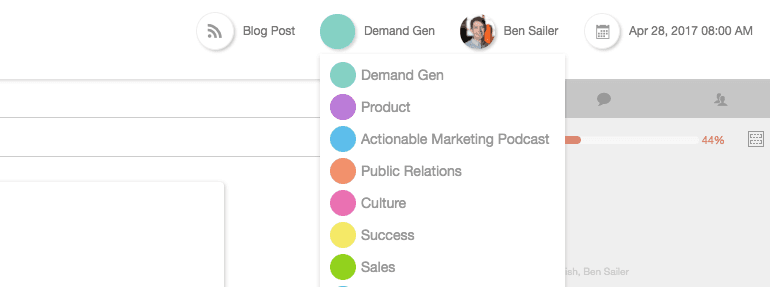
Step 2: Determine the Steps Required to Complete Each Project
If you have recurring project types you create on a regular basis, odds are you have pre-defined workflows for each project. If you don’t, it’s time to consider documenting checklists you can use to make sure every project on your schedule is completed thoroughly. This helps prevent wasting time to fix errors later and enables teams to work more efficiently and effectively. Get out a text editor and lay out your steps like this:Step 1: [INSERT STEP] Step 2: [INSERT STEP] Step 3: [INSERT STEP]
For a blog post, a hypothetical checklist might look like this:Step 1: Find a target keyword Step 2: Write 20 headline options Step 3: Craft an outline Step 4: Write your post Step 5: Proofread / edit Step 6: Schedule publish date
Simple stuff. To build your own checklists, ask yourself:- Which steps do we usually follow to complete this task?
- Are there steps we could consider adding, to make this process more effective?
- Are there unnecessary steps we should remove to increase efficiency?

Why Are Checklists Important?
Checklists are essential for making your marketing schedule more useful. Planning projects ahead of time loses its value if those projects aren’t completed properly. Plus, if part of our goal is to increase efficiency and effectiveness, ensuring steps aren’t missed is crucial. For more insight into the power of checklists, watch this video of Atul Gawande, author of The Checklist Manifesto:Step 3: Place Projects on Your Marketing Schedule
Now that you’ve got all your ducks in a row, it’s time to start dropping your content onto your marketing schedule.Set (Realistic) Deadlines
Every project should have a clear and realistic deadline. But, how do you determine what a realistic deadline looks like? There’s a data-backed solution to help you figure out. Start by roughly estimating the amount of time it usually takes you to complete a certain type of task or project. Set your first deadline accordingly. Then, track your actual time spent working on those types of projects over time.Set realistic deadlines by tracking the actual time it takes to complete projects.
Click To Tweet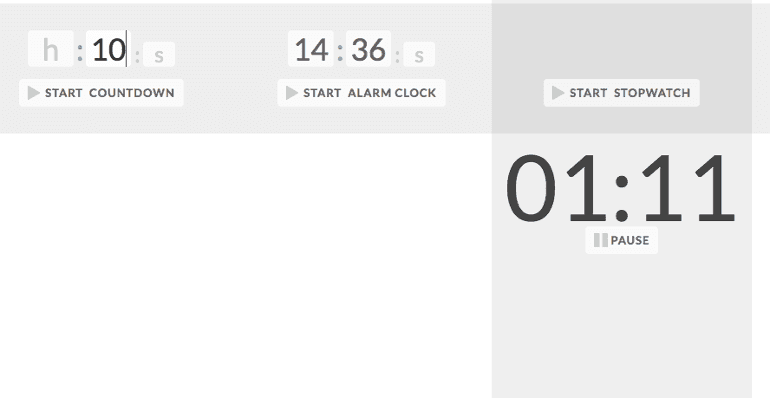 Timer Tab
Eventually, you’ll start to see a pattern. Once you have about ten completed projects on your time sheet, calculate the average time it took to get from start to finish. You’ll now have a clear idea of how long a project should typically take.
Timer Tab
Eventually, you’ll start to see a pattern. Once you have about ten completed projects on your time sheet, calculate the average time it took to get from start to finish. You’ll now have a clear idea of how long a project should typically take.
Set Up Deadline Alerts
What happens if you forget to check your schedule and blow a deadline? Odds are, your boss will look something like this: Giphy
And you’ll feel something like this:
Giphy
And you’ll feel something like this:
 Giphy
Avoid catastrophe! Use Google Calendar to set up an alert for each deadline. That way, you’ll get an email reminder to make sure you don’t forget. Start by clicking a time on your Google Calendar and give your project a name:
Giphy
Avoid catastrophe! Use Google Calendar to set up an alert for each deadline. That way, you’ll get an email reminder to make sure you don’t forget. Start by clicking a time on your Google Calendar and give your project a name:
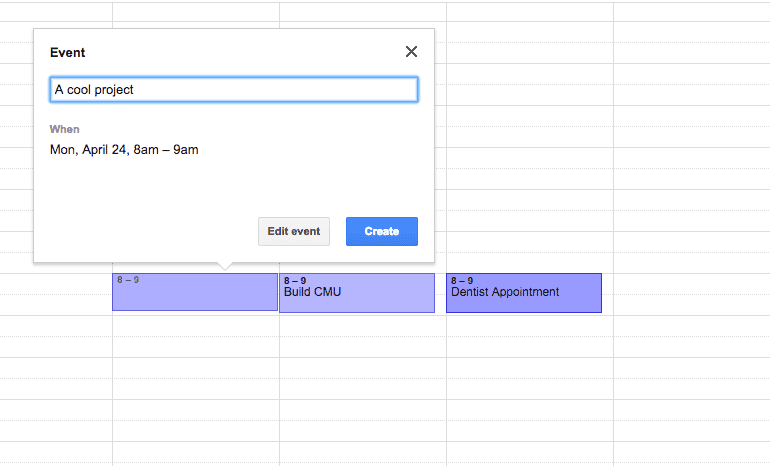 Then, click Edit Event to control how frequently you receive reminders. Adjust to your own preference:
Then, click Edit Event to control how frequently you receive reminders. Adjust to your own preference:
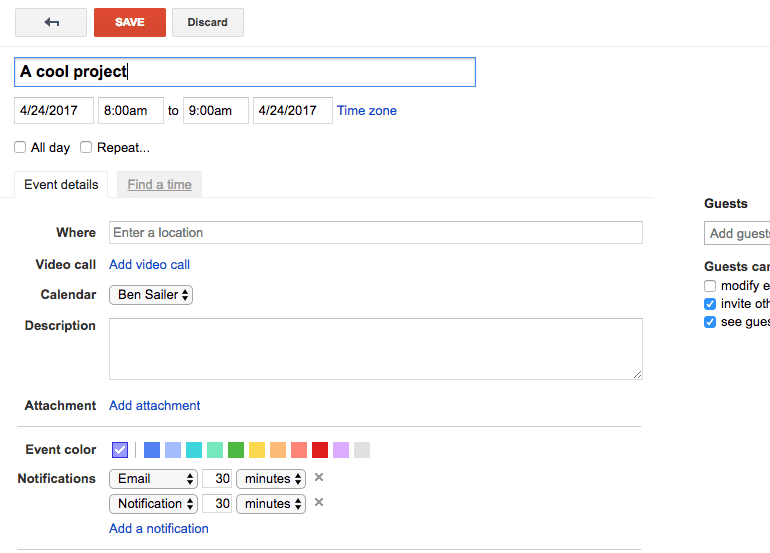 Now, you won’t have an excuse for blowing that deadline. If you’re a CoSchedule user, you’ll receive email and in-app notifications to show you when deadlines are approaching. They're all visible upon logging in on your dashboard as well:
Now, you won’t have an excuse for blowing that deadline. If you’re a CoSchedule user, you’ll receive email and in-app notifications to show you when deadlines are approaching. They're all visible upon logging in on your dashboard as well:
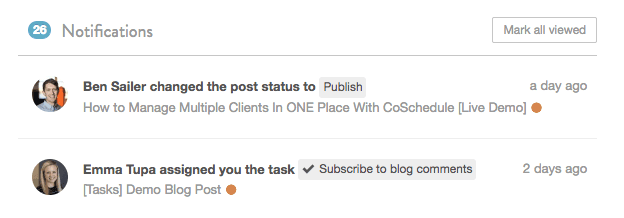
Now, Finally, Let’s Add Your Projects to Your Marketing Schedule
If you haven’t done so yet, download the marketing schedule template included in this blog post. Then, click the Marketing Schedule tab in the lower left: Here’s what you’ll see in there:
Here’s what you’ll see in there:
 At first, you’ll see a ton of columns. Let’s break down what each one is for:
At first, you’ll see a ton of columns. Let’s break down what each one is for:
- Title: Self-explanatory. This is your headline.
- Article Type: For a blog post or article, list the article type. Ex: How-To, News Announcement, etc.
- Image Type: If your post will include an infographic, image gallery, or other design-intensive graphic, list it here.
- Deadline: If it’s not done by this date, there had better be a good reason.
- Step In Process: Update your progress here. Ex: Ideation, Writing, Design, Editing, etc.
- Subject Matter Expert: If you’re depending on an internal subject matter expert to support and review your content for factual accuracy, include their name here.
- Designer: Who’s creating your graphics”
- Author: Who’s writing your content?
- Notes: Keep miscellaneous notes about your project here.
- In Edit Folder?: If this content is ready for editing, denote that in this column.
 Here’s what you’ll see next:
Here’s what you’ll see next:
 To complete this tab, edit the Project Type to reflect the types of content you create (blog posts, social campaigns, videos, etc). Then, fill in each field accordingly:
To complete this tab, edit the Project Type to reflect the types of content you create (blog posts, social campaigns, videos, etc). Then, fill in each field accordingly:
- Steps: List out each step to complete that project type.
- Hours: Include how much time each step should take (on average).
- Explanation: Write out a short description of what each step entails.
Here's how to keep every content marketing project you create on track
Click To TweetUsing Your Marketing Schedule Template
Now you know how to get your spreadsheet set up. The next step is to actually use it. Follow these steps to get the most out of it.Color-Code!
This sounds like a simple step, but it makes a big help when you want to look at your schedule and see what’s up fast. Use the Color Key section of your template to keep track of which colors you’re associating with which projects or team members:
Decide Who Will Own Your Schedule
There are a few approaches you can take here. You can either have everyone on your team add their own projects, or have one person in charge of adding updates and maintaining the document. There’s also a third option, where team leads can manage projects for their respective staff.Scheduling Projects and Campaigns with CoSchedule
CoSchedule Calendar Products include feature-rich marketing organization tools for marketing teams. Within this suite you’ll find access to the Content Calendar , Social Calendar, and Marketing Suite. All of which allows your team to plan, organize, and schedule every project in one place. Say hello to efficient marketing and kiss chaos goodbye.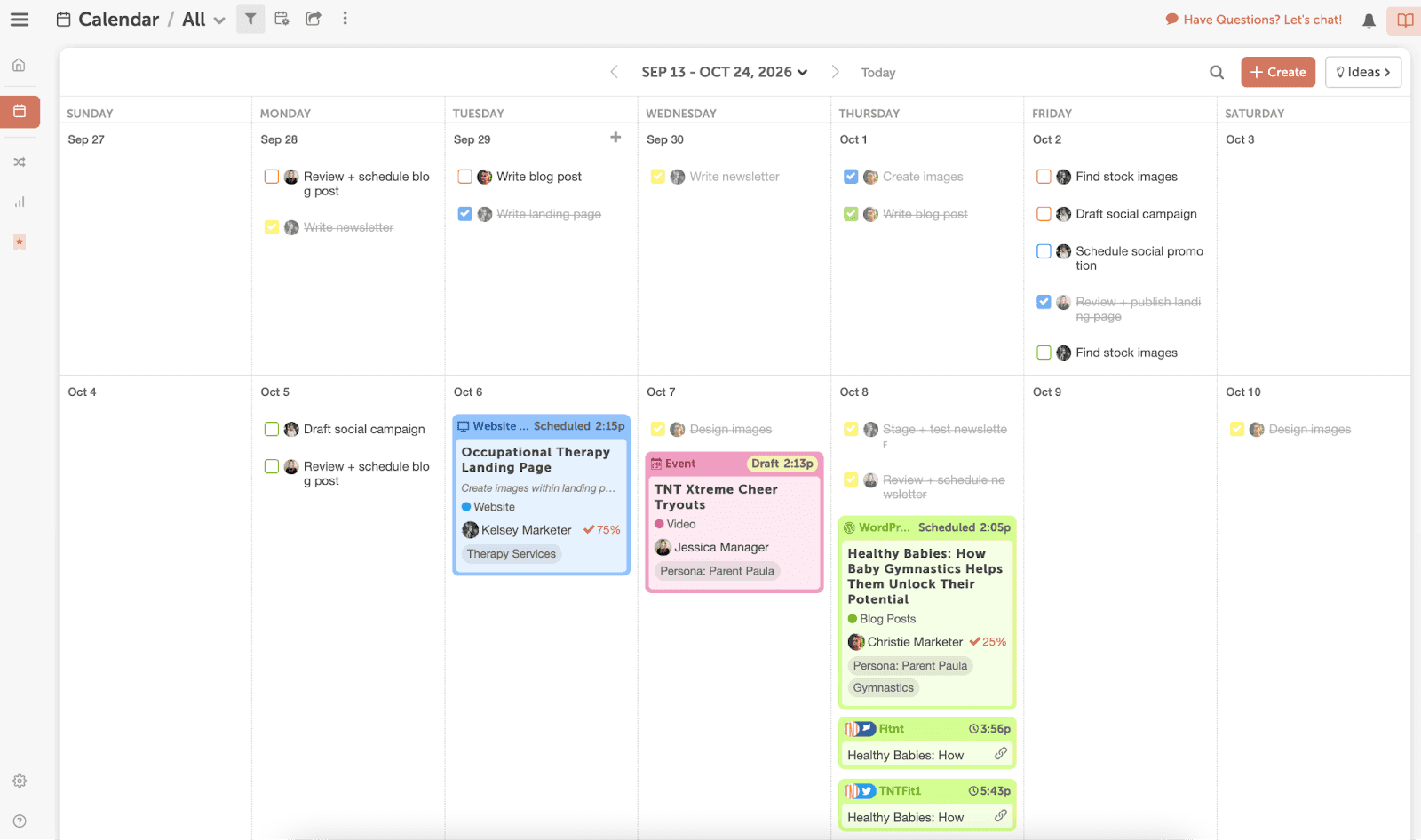 This blog post was originally published on April 26, 2017. It was updated and republished on April 25, 2019, and September 18, 2023. Paige Nordstrom contributed to this post.
This blog post was originally published on April 26, 2017. It was updated and republished on April 25, 2019, and September 18, 2023. Paige Nordstrom contributed to this post.

